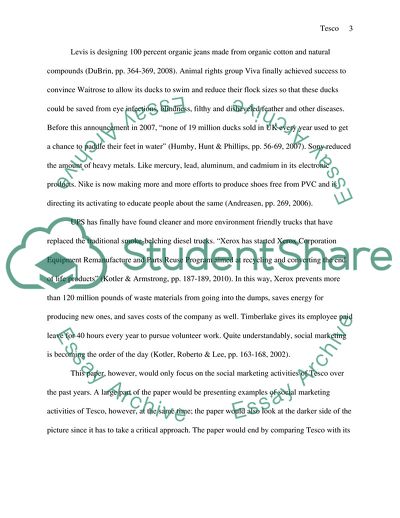Cite this document
(The Social Marketing Activities of Tesco Case Study, n.d.)
The Social Marketing Activities of Tesco Case Study. https://studentshare.org/marketing/1743876-marketing-critically-evaluate-a-uk-based-company-of-your-choice-in-relation-to-how-successful-they-are-at-social-marketing-tesco
The Social Marketing Activities of Tesco Case Study. https://studentshare.org/marketing/1743876-marketing-critically-evaluate-a-uk-based-company-of-your-choice-in-relation-to-how-successful-they-are-at-social-marketing-tesco
(The Social Marketing Activities of Tesco Case Study)
The Social Marketing Activities of Tesco Case Study. https://studentshare.org/marketing/1743876-marketing-critically-evaluate-a-uk-based-company-of-your-choice-in-relation-to-how-successful-they-are-at-social-marketing-tesco.
The Social Marketing Activities of Tesco Case Study. https://studentshare.org/marketing/1743876-marketing-critically-evaluate-a-uk-based-company-of-your-choice-in-relation-to-how-successful-they-are-at-social-marketing-tesco.
“The Social Marketing Activities of Tesco Case Study”. https://studentshare.org/marketing/1743876-marketing-critically-evaluate-a-uk-based-company-of-your-choice-in-relation-to-how-successful-they-are-at-social-marketing-tesco.


